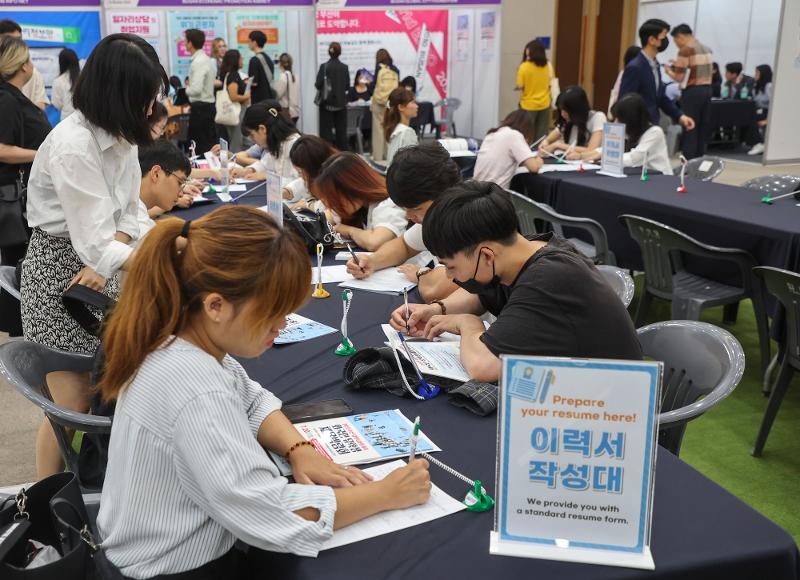
2년 연속 감소세를 보였던 한국의 총인구가 외국인 유입에 힘입어 증가세로 돌아섰다. The national population last year grew after two straight years of decline thanks to more foreign residents.
통계청이 29일 발표한 ‘2023년 인구주택총조사’에 따르면 지난해 11월 기준 한국의 총인구는 5177만명으로 전년 대비 8만명, 0.2%증가했다.
Statistics Korea on July 29 released the 2023 population and housing census saying the country had 51.77 million people, up 0.2% or 80,000 year on year.
총인구는 2021년과 2022년 감소하다 지난해 증가세로 전환했다. 외국인 수가 가파르게 늘었기 때문이다. 외국인이란 국내 거주 3개월 이상 외국 국적자를 뜻한다.
The figure decreased in 2021 and 2022 before rising last year thanks to a rapid increase in expats, or foreign nationals staying in the country for more than three months.
지난해 기준 국내 거주 외국인은 194만명으로 전년 보다 18만명, 10.4% 증가했다. 역대 최대 증가율이다. 전체 인구에서 차지하는 비중도 3.4%에서 3.7%로 높아졌다.
As of last year, the number of expats was 1.94 million, up 180,000 for a record-high rise of 10.4%. Foreign residents also comprised 3.7% of the population, up from 3.4%.
외국인들을 국적별로 볼 때 중국(한국계)가 53만2000명(27.5%)으로 가장 많았다. 베트남(24만 7000명·12.8%), 중국(22만1000명·11.4%), 태국(19만1000명·9.9%)이 그 뒤를 이었다. 전년 대비 외국인이 가장 많이 증가한 국적은 3만8000명(18.1%)이 증가한 베트남이었다. 태국(2만7000명·16.8%), 중국(1만7000천명·8.5%)이 다음 순위를 차지했다.
By nationality, Chinese of Korean descent accounted for the most expats with 27.5% (532,000), followed by Vietnamese with 12.8% (247,000), Chinese 11.4% (221,000) and Thais 9.9% (191,000). Vietnamese showed the highest increase of 18.1% (38,000), followed by Thais with 16.8% (27,000) and Chinese 8.5% (17,000).
반면 지난해 내국인은 총 4984만명으로 전년과 비교해 10만1000명(0.2%)이 감소했다. 특히 만14세 이하 유소년 인구는 562만명으로 전년 대비 4%이상 줄었다.
The number of Koreans, in contrast, fell 0.2% or 101,000 to 49.84 million. That of children aged 14 or under declined over 4% to 5.62 million.
지난해 기준 총 가구수는 2723만 가구로 전년 보다 1.5% 증가했다. 이 가운데 다문화 가구는 41만 6000 가구로 전년에 견줘 4.1% 올랐다. 전체 가구 중 1인가구는 783만 가구로 총 가구수 대비 35.5%로 역대 가장 높은 비중을 보였다.
The number of households last year rose 1.5% to 27.23 million, among which that of multicultural families went up 4.1% to 416,000. Single-member households also comprised a record-high 35.5% of the population with 7.83 million.
윤소정 기자 arete@korea.kr
By Yoon Sojung, arete@korea.kr
